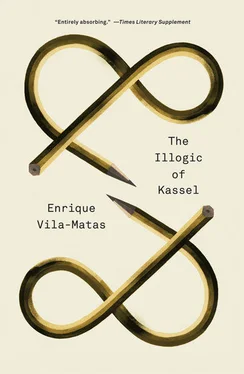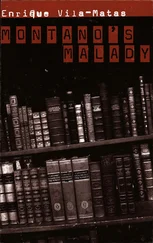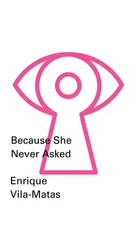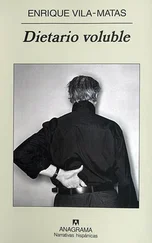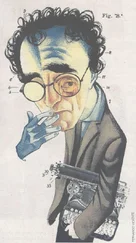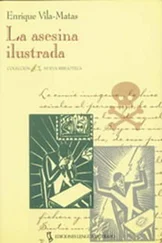I turned over on the couch.
“And don’t leave me all alone again!” I shouted at her.
That was a mistake. On a journey there is always one mistake that stands out above all others. Since I was a boy — a shy one like any other — I’ve always tried to hide from everyone the fact that I was very lonely. But I had ended up snapping at Boston and I couldn’t turn back the clock.
She smiled.
“I think,” she said, “that is entirely beside the point.”
As soon as it had stopped raining, we shot out of the Dschingis Khan, leaving some unappetizing cakes half-eaten. We went straight around to the back of the restaurant and from there set out on a walk through the south of Karlsaue Park.
Half an hour later, we were looking up the pronounced slope of a steep and pretty path that seemed to hail from an earlier time. After a tough climb, we stopped at a precarious little stone construction, the front of which had a closed green door and two windows with drawn blinds behind rusty security grilles. The grilles boasted a number of hinges pretending not only to be gold but to be protected by a sophisticated-looking alarm system. If you went to the back of the house, you could get in via an open door and enter a large, sparsely furnished room. A wooden sign by the back door informed the visitor that what was inside the house could be associated with The Last Season of the Avant-Garde , the work of the Berlin artist Bastian Schneider. Inside, there was an easel with an unfinished canvas depicting one of the two battles of Smolensk in the Second World War. It was so well painted, you could almost hear the din of battle. As for the easel, there was a small machine attached to it that looked like an old wall-mounted telephone, but was in fact a tiny, peculiar printing press.
On the board at the top of the easel, you could read the inscription from the tomb of a great and almost forgotten genius, Martinus von Biberach:
Ich leb und ich waiß nit, wie lang,
Ich stirb und waiß nit wann,
Ich far und waiß nit, wahin,
Mich wundert, daß ich fröhlich bin.
(I live and don’t know how long,
I’ll die and don’t know when,
I am going and don’t know where,
I wonder that I am happy.)
If you pushed the button on the little machine beneath the word fröhlich , it would crank into motion and spit out a scrap of paper on which Schneider gave his opinion that the contemporary artist these days was in the same position as the traveling artist of the pre-Aufklärung (the period before the German Enlightenment), writing not for an established community, but rather in the hope of founding one.
Squatting down, I read the bit of paper the machine had spit violently onto the floor. I thought at length about the group in the forest: that improvised community I’d seen around Janet Cardiff and George Bures Miller’s loudspeakers.
That message from Bastian Schneider was just right. When I finished reading it, I went outside the house and saw the park spread out below; the view was slowly narrowing on the horizon. A moment arrived, and I had the impression that with each blink of the eye the space grew narrower still. Even in the most immediate vicinity, soon there wasn’t the slightest line or figure. And I thought: no doubt about it, we are at the center of the center of what was once a center. It’s also beyond question that we’re in the last season of the avant-garde, or perhaps the penultimate one. And the last does exist, but its whereabouts are unknown; being clandestine suits it.
I thought of the world of summer and the world of death and birth, of the world of collapse and recovery, of storms and calms: of the infinite cycle of ideas and action, of infinite invention, of supposedly endless experimentation. And because a dust cloud seemed about to swamp the place, I remembered the fearful handful of dust with which, according to T. S. Eliot, the Western tradition had come to an end. It was a fine dust that blew around out there, from left to right, from right to left, from everywhere to everywhere, reaching the heights and drifting down murmuring.
I would have given anything to know what it murmured.
An hour later, in a theater at the Orangerie, I was bewildered to see the Finnish singer M. A. Numminen adapting Ludwig Wittgenstein’s Tractatus Logico-Philosophicus and blowing it to bits with jazz, pop, and punk rock.
I could hardly believe what I’d just seen. The swift and efficient destruction of the Tractatus . When I realized Numminen had wrecked the book, I tittered nervously, almost foolishly, and Boston had to calm me down. I haven’t had much sleep, I reminded her, as if that might serve as some sort of excuse. Well, she said, don’t forget you have a dinner date with Chus. I felt it was by no means certain I’d make it to that appointment alive, as my weariness was sapping my strength. On this occasion, unlike a year ago, I’d be going out at night without the assistance of Collado’s tablets.
I went back to thinking about the Finn, Numminen, and recognized that none of us Anglo-Saxons or Latinos could understand his vein of humor; he was, for us, an incomprehensible comedian, albeit an extremely good one. I didn’t quite know why, but he certainly was. Why, why was I sure? I didn’t know how to shake off this doubt.
When Numminen left the stage, it was Boston who laughed, although not in such an unbalanced way as I had; she was laughing because she’d just read Numminen’s bio in the program notes. The translation of his biography must have been taken straight from that anarchic Google tool: “M. A. Numminen was given birth to in 1940 in Somero, Finland, and studied philosophy, the sociology and the linguistics at the University of Helsinki. . He has composed philosophical intimacies, movies of pen, poems, and experiences in genius and tango.”
Philosophical intimacies? Movies of pen? It was strange to see new genres of writing seeming to be invented daily. The encounter of genius and tango seemed an attractive combination to me, however unlikely it was that either Boston or I would ever end up fitting in anywhere. But surely it might be an enviable thing to experience genius and dance it in the form of a tango. Coming out of the Finnish show, we exchanged these jovial comments on the Orangerie terrace, noting that the storm had finally moved off.
Then Boston showed me she knew more than I thought by talking about a book by the Argentinean J. Rodolfo Wilcock, The Temple of Iconoclasts , in which (in one of the stories) a Catalan director named Llorenç Riber — a big fan of rabbits (he put them into all his work) — was summoned to Oxford to direct the stage version of the Tractatus Logico-Philosophicus , and many thought at first it was an almost desperate undertaking.
We had some coffee — rather a lot in my case — and set off in the direction of Rosemarie Trockel’s pavilion to see her piece Tenattemptsforonesculpture , a work Boston didn’t know how to explain to me; perhaps it had no explanation, though I decided to take it upon myself to interpret it as something that spoke about how choosing a daring path is often a good way out of adversity: an idea I made a mental note of, as I had the feeling it was something I’d already done at certain points in my life, and it would be a good thing for me to keep in mind.
Soon after, we saw the sculpture Scaffold , Sam Durant’s gigantic gallows. That horrifying place was swarming with children: they were climbing all over the vast structure, confusing it, I think, with an amusement park. In the future, the world will belong to these children and resemble a lawless playground, I thought, all the while linking Scaffold to my red couch in the Dschingis Khan, that seat I tended to associate with a gallows.
Читать дальше
